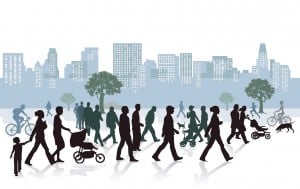How will the next five years unfold?
That’s the question everyone is asking, isn’t it?
What’s going to happen to my life, my health, my job or my business?
And for many people listening to this podcast, they’re wondering what’s going to happen to our property markets and the value of my home and my investment properties.
Of course, nobody knows for sure, the world seems to be in a state of chaos.
While some of the parts of the world are experiencing a second wave of coronavirus, other poor parts of the world are experiencing extreme first wave.
Add to this the state of flux of Australia’s trade relationships, the world’s geopolitical problems, and we are living in interesting times – aren’t we?
But amongst this chaos in tune, there are some things that can be said about the next five years, some emerging trends, behaviours and opportunities that will flow from the various undulation is in our Australian demographic landscape and that’s what I’d like to talk about today with Simon Kuestenmacher.
One of the themes of our regular discussions tends to be how demographics drive our markets – not just the property markets but business as well.
Let’s start with the elephant in the room – clearly, we are going to have less immigration in the short-term.
- Immigration will slow in the short-term
- We’ll have fewer students, fewer tourists and fewer backpackers
- As soon as practical, the government will open the gates and encourage immigration as a way of increasing our GDP
We shouldn’t forget that almost half of Australia’s population growth comes from natural increase, and an even bigger driver of demand are emerging trends, behaviours and opportunities flow from the various undulations in the demographic landscape.
A breakdown of the different demographic groups:
- Kids – birth to late teens
- Learning – entering university, moving out of the parental home, becoming an adult
- Partnering – may stay in the inner-city (near jobs) with a partner
- Building – having children with a partner, real estate needs increase, need 3-4 bedrooms
- Easing – When you’re 55-64, in the later stages of a career, may be taking more time off
- Retiring – Even if they aren’t all retired, they have less of an influence on the workforce. Spending more time with grandchildren. Staying in home as long as they can.
- Aging – 80+ cohort, needs accessible property, needs to be located near medical facilities
Which of these groups are going to change significantly and place an increasing demand on our resources?
- Teenagers - schools, sporting facilities
- 40 somethings – family, accommodation
- Retirees
Because of their sheer size and stage in the life cycle, no generation will shape Australia more during the 2020s than millennials.
- Millennials were born between 1982 and 1999. This makes them aged 21 to 38, and they will be 31 to 48 by 2030.
- Millennials perfected the art of procrastination as they popularised the gap year, forgot to move out of the parental home, pursued education for much longer, settled for a partner much later in life, and pushed out buying their first home and birth of their first child into their mid-30s.
- Throughout the 2020s, this generation of procrastinators will follow in the footsteps of every generation before them and enter the family-formation and home-buying stage.
- As life pushes you forward, preferences change. Throw a newborn into the mix and even the hippest inner-city couple gives in and follows the suburban sirens
- Throughout the 2020s, millennials will leave their centrally located one or two-bedroom apartments and migrate to the suburbs or even regional centres in search of more bedrooms. They want an additional bedroom or two to bring up the kids and to work from home occasionally.
How are millennials going to reshape suburbia?
- Due to COVID-19, reshaping will be more intense.
- Millennials will want to be able to walk or cycle to the basic functions of their lives within 20 minutes.
- Parents will want childcare available.
- May want to be able to cycle their kids to kindergarten.
- Public transport may be perceived as unsafe, so they will want infrastructure for safe and pleasant cycling and walking.
- Local neighbourhoods should be functional, beautiful, and child-friendly.
Who will move into the inner-city apartments left behind by the millennials?
- Gen Z is a much smaller generation than the millennials, so there will be empty spots.
- Inner cities might be flat for a while and prices will go down.
- But that is temporary, because as soon as immigration fires up again, knowledge jobs that Australia is creating will cluster in the inner cities near other knowledge jobs.
Conclusion: 
Life will go on post-Covid-19 and Australians will transition from one stage of the life cycle to another.
Many will move from the bush to the city, some will move from the city centre to the city edge, pre-retirees will move between states, some may even be motivated to pursue the space and the serenity of low-density living in what they consider to be a contagion-free community.
And that is surely the beauty and the opportunity of the lifestyle options on offer to those of us lucky enough to live in Australia.
Links and Resources:
Michael Yardney
Simon Kuestenmacher - Director of Research at The Demographics Group
In these challenging time why not get the team at Metropole to build you a personalised Strategic Property Plan – this will help both beginning and experienced investors.
Some of our favourite quotes from the show: 
“I can see this is going to revitalize our local shopping centres that were starting to die off for the big centres that became entertainment venues as well.” – Michael Yardney
“I can’t see the government having any alternative but to push migration.” – Michael Yardney
“Most wealthy people are self-made. They’ve actually achieved it.” – Michael Yardney
PLEASE LEAVE US A REVIEW
Reviews are hugely important to me because they help new people discover this podcast. If you enjoyed listening to this episode, please leave a review on iTunes - it's your way of passing the message forward to others and saying thank you to me. Here's how
Subscribe & don’t miss a single episode of Michael Yardney’s podcast
Hear Michael & a select panel of guest experts discuss property investment, success & money related topics. Subscribe now, whether you're on an Apple or Android handset.
Need help listening to Michael Yardney’s podcast from your phone or tablet?
We have created easy to follow instructions for you whether you're on iPhone / iPad or an Android device.
Prefer to subscribe via email?
Join Michael Yardney's inner circle of daily subscribers and get into the head of Australia's best property investment advisor and a wide team of leading property researchers and commentators.

![[Podcast] The Shape of Things to Come with Simon Kuestenmacher](https://cdn.propertyupdate.com.au/wp-content/uploads/2020/10/MY-podcast-217-The-shape-of-things-to-Come-01.jpg)













![Did you know these 15 things about coffee? [infographic]](https://cdn.propertyupdate.com.au/wp-content/uploads/2016/09/coffee-270x200.jpg)



